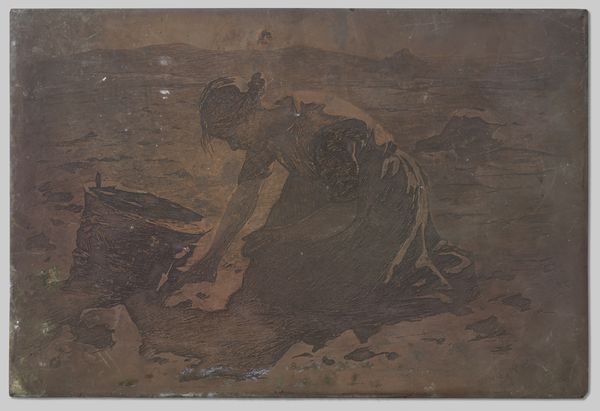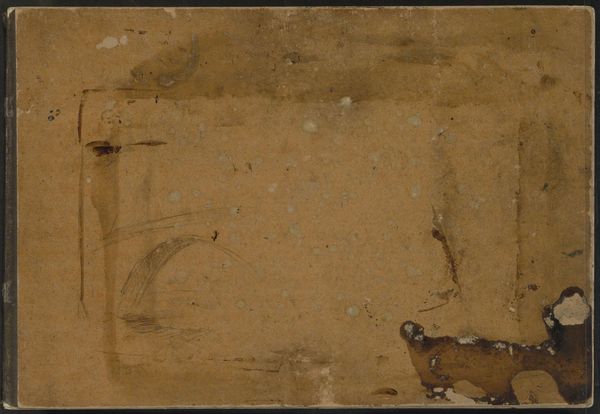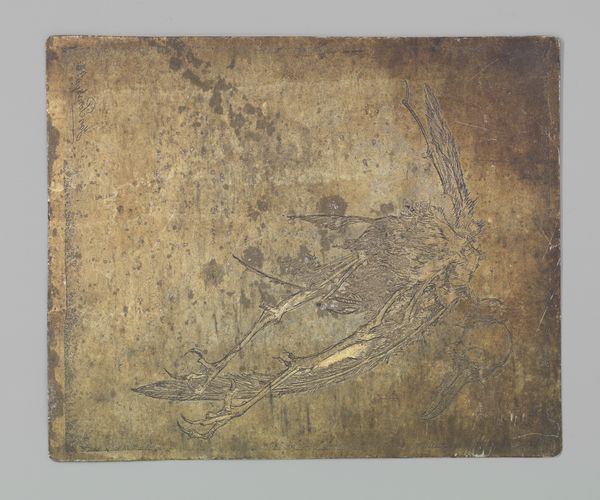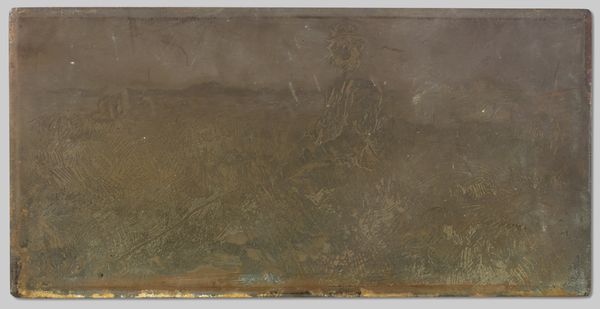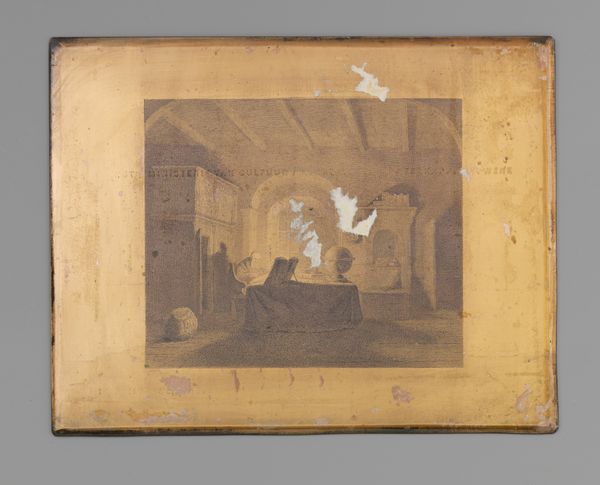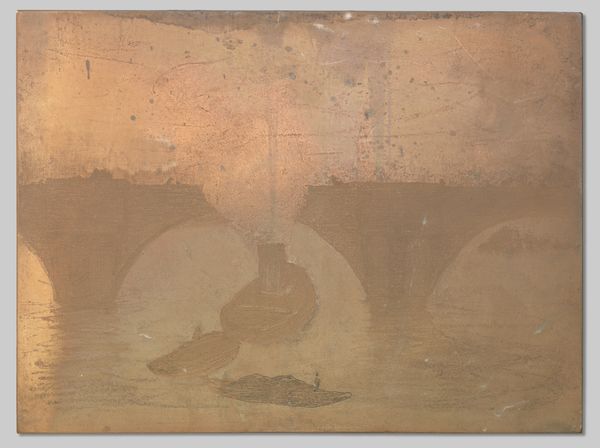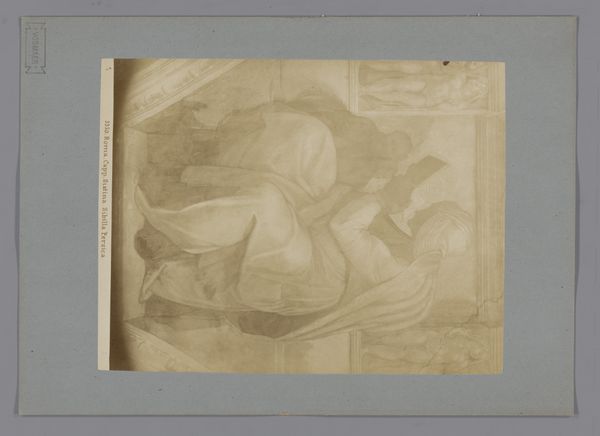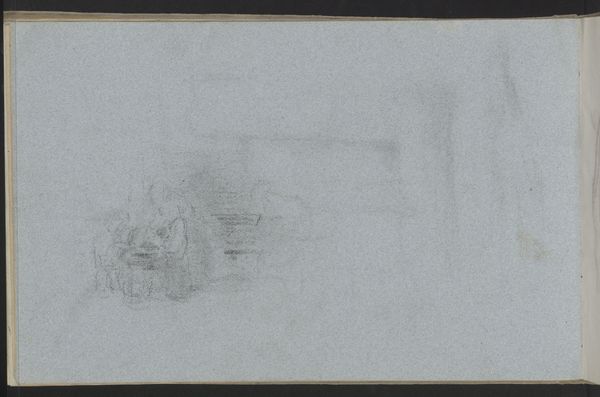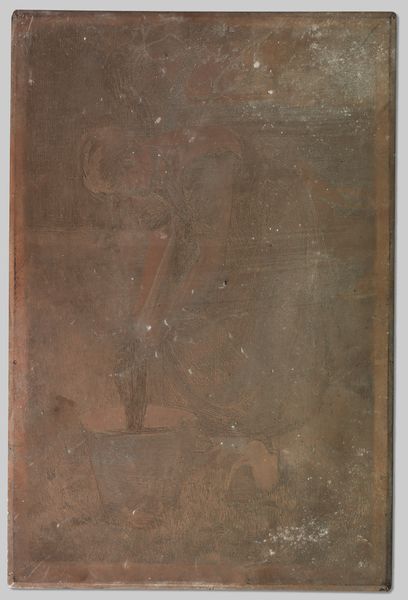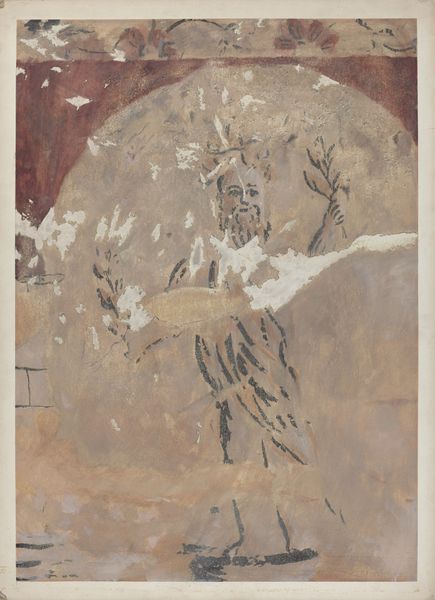
painting, watercolor
#
portrait
#
gouache
#
painting
#
watercolor
#
genre-painting
#
watercolor
Dimensions: height 199 mm, width 279 mm
Copyright: Rijks Museum: Open Domain
Curator: Willem Witsen created this genre painting called "Aardappeletende jongen", around 1888. It's held here at the Rijksmuseum and renders as a study in watercolor and gouache. Editor: My first impression is of somber hues. It has a very muted palette; almost a monochrome rendering in various shades of brown and green, fostering a melancholic, pensive mood. Curator: Indeed. The painting’s subdued palette mirrors its subject matter—a boy quietly eating potatoes. Witsen, known for his ties to the literary and artistic circles of the Dutch Revival, was deeply concerned with everyday life and capturing its nuanced emotions through symbolist language. Potatoes here are less about simple sustenance and more about poverty. Editor: I can appreciate the potential embedded narrative. Structurally, though, it feels a little unresolved. The composition pushes the subject towards the middle and left. Do you feel like there’s an unfinished or intentionally obscured element there, formally speaking? Curator: Perhaps both. The obscured face suggests a sense of anonymity or even alienation. While technically considered a portrait, I wouldn't go as far to assume the model and sitter had close ties. Rather, Witsen intended to amplify universal themes—poverty, humility, and a certain quiet dignity amidst hardship. It is an important icon for Dutch realism of the period. Editor: It does invite introspection, prompting the viewer to contemplate the inner world of this young boy through the visual language Witsen offers, while also keeping him distant through formal incompleteness. But do you really think the obscuring of facial features necessarily invites empathy or merely keeps us as distanced observers, pondering over poverty’s ‘universal’ state from afar? Curator: The effect, perhaps, is twofold. The lack of identifying detail universalizes his plight, while the somber mood invites introspection. It asks us to consider how the basic necessities of life are not equally accessible. It’s less about voyeurism, more about triggering a confrontation with a reality often overlooked or ignored. Editor: Ultimately, Witsen invites a complex, visual exploration, pushing us to ask: how are such symbols, composition, color, and technique connected? It feels much richer now when we recognize his artistic considerations and broader societal impact of the piece. Curator: I think I understand better the work through a purely aesthetic point of view. Viewing artwork through symbols allows an expanded consciousness of its value in Dutch culture and memory.
Comments
No comments
Be the first to comment and join the conversation on the ultimate creative platform.
